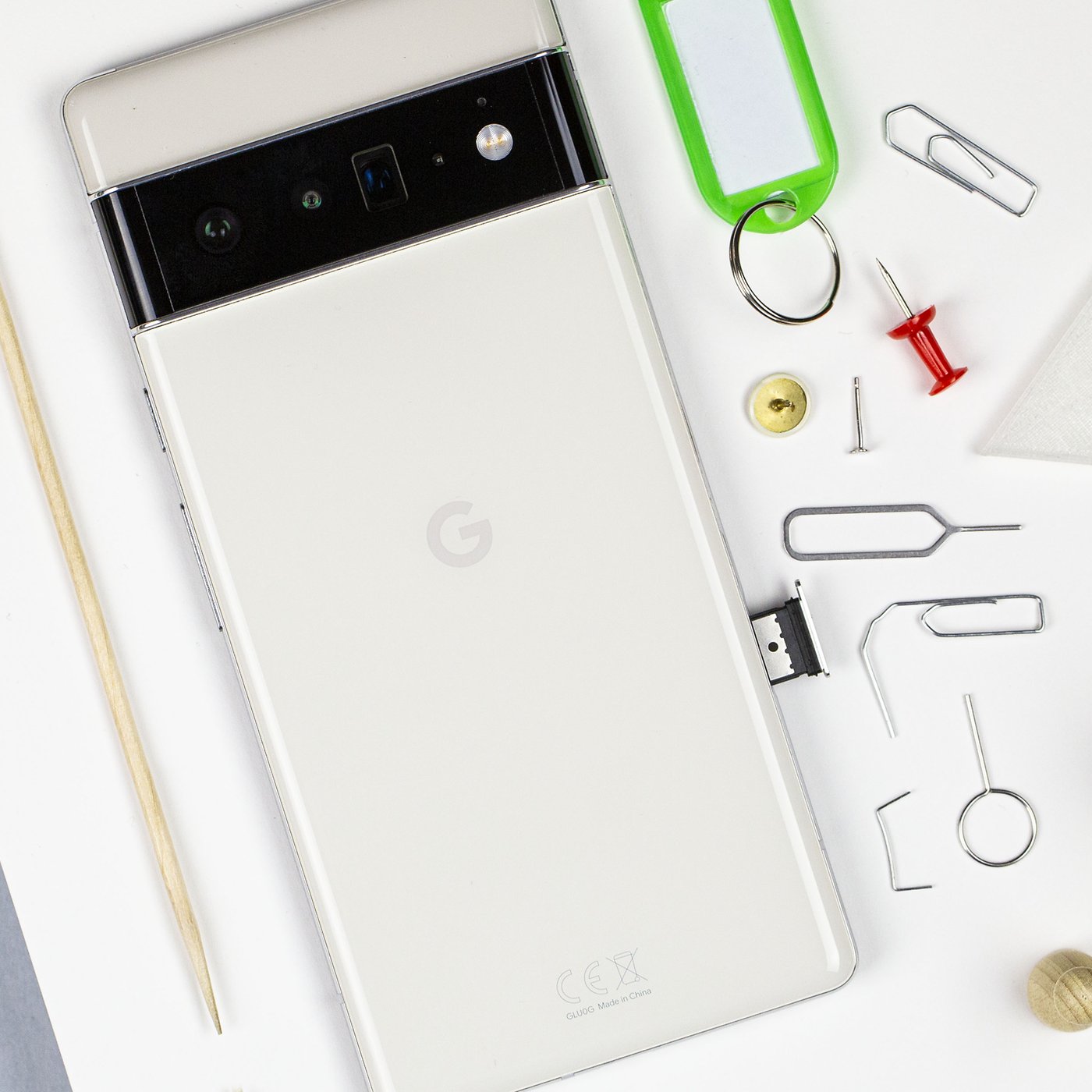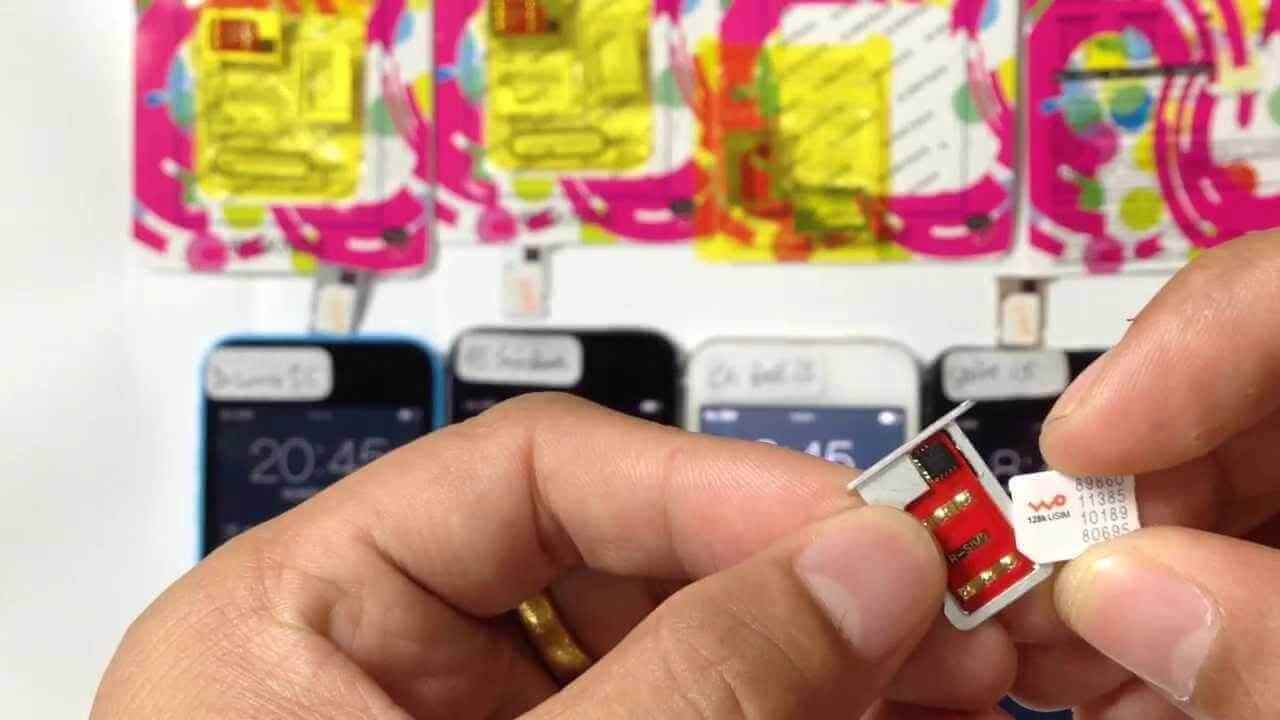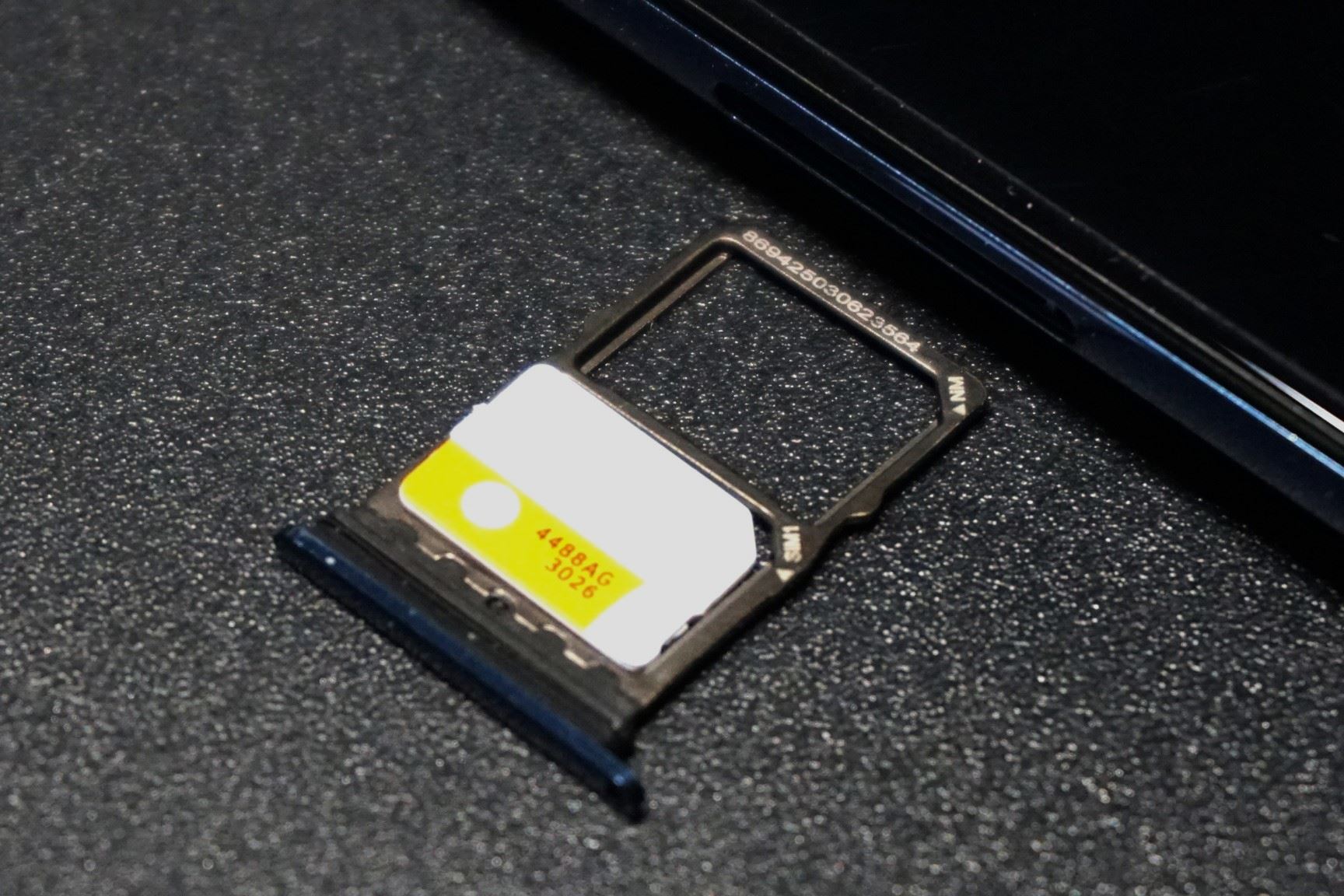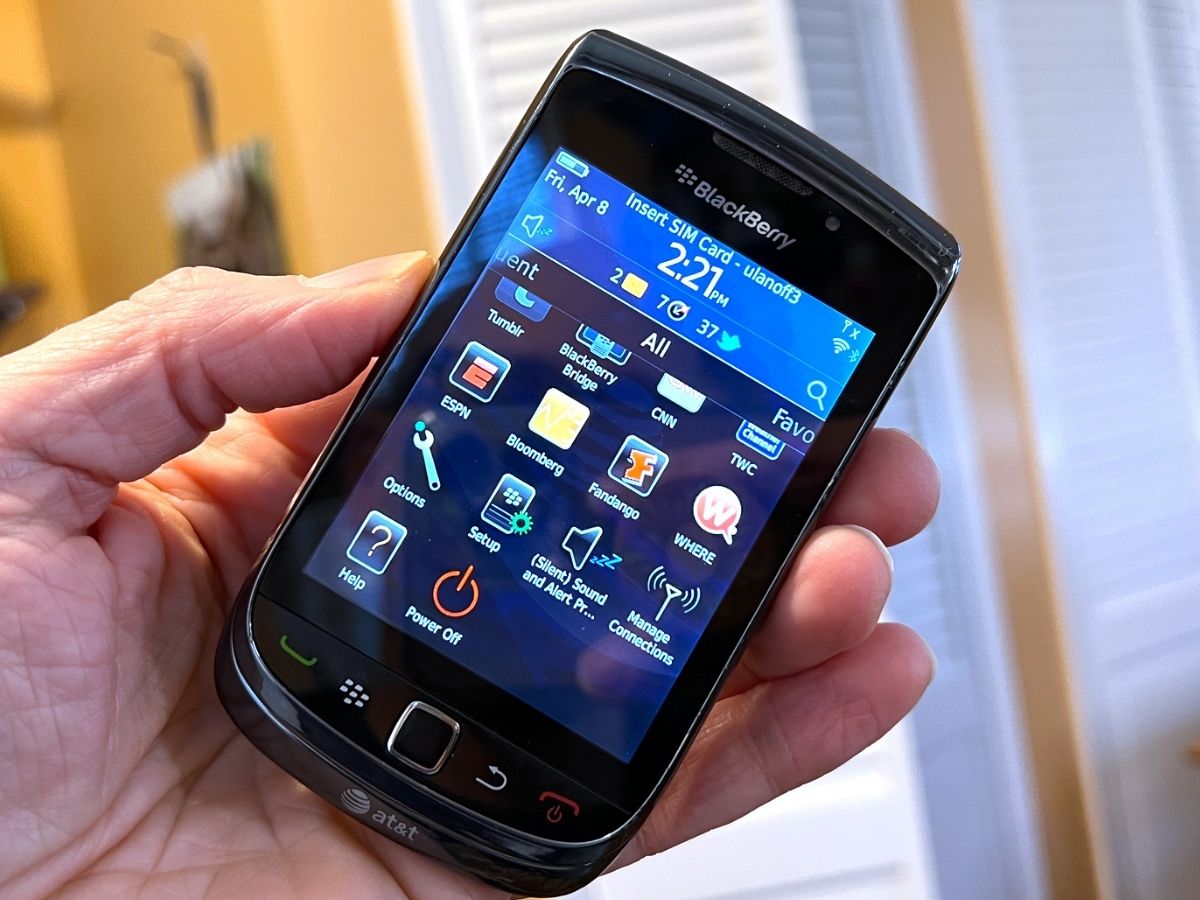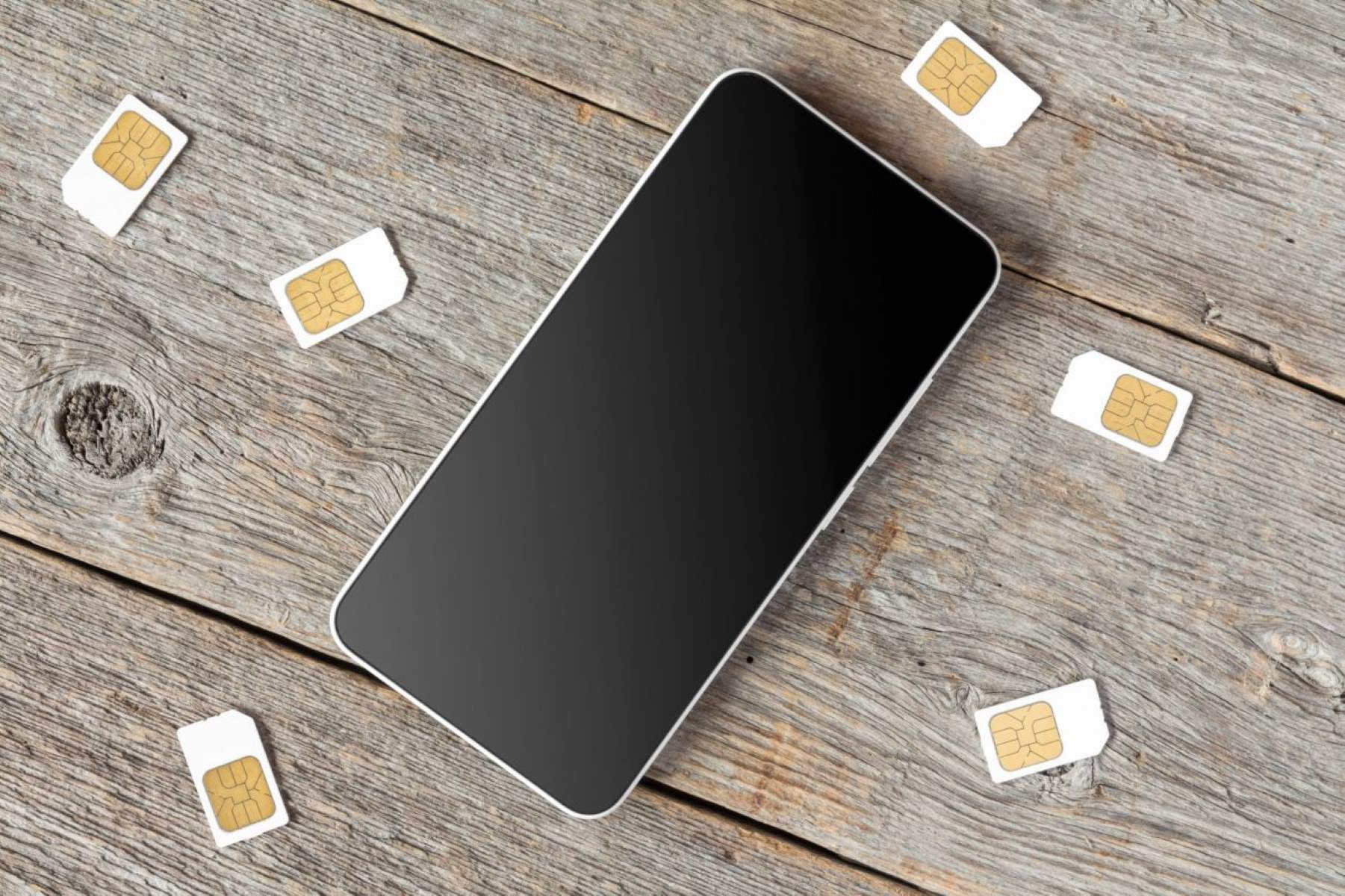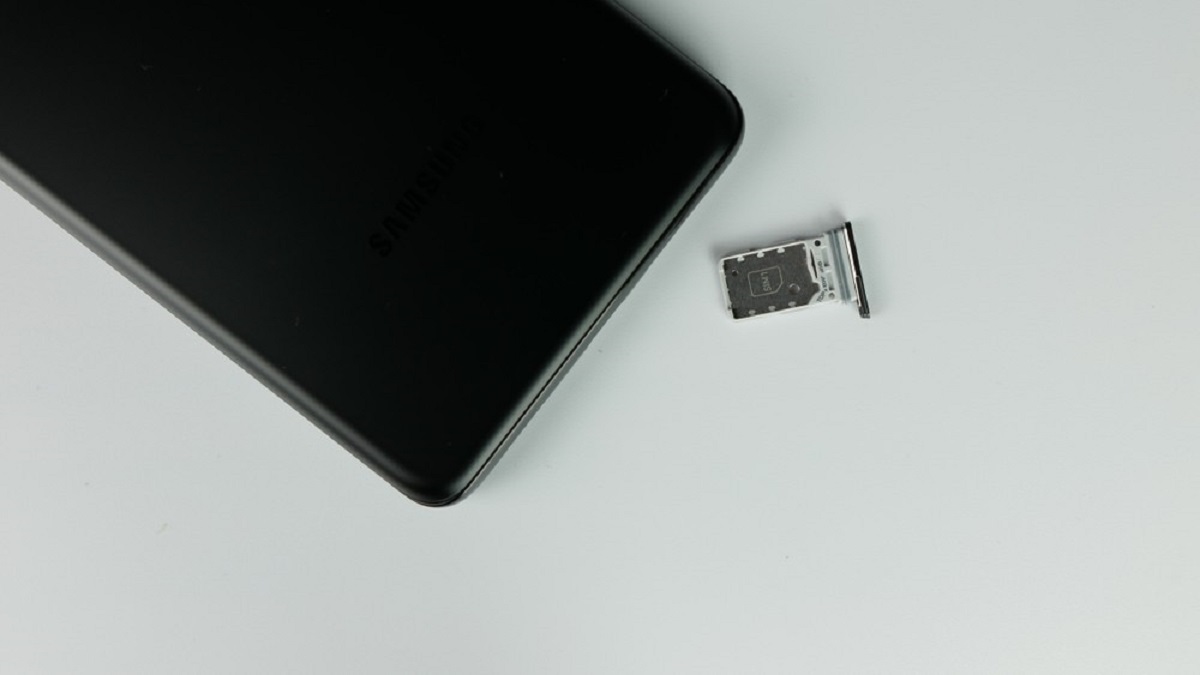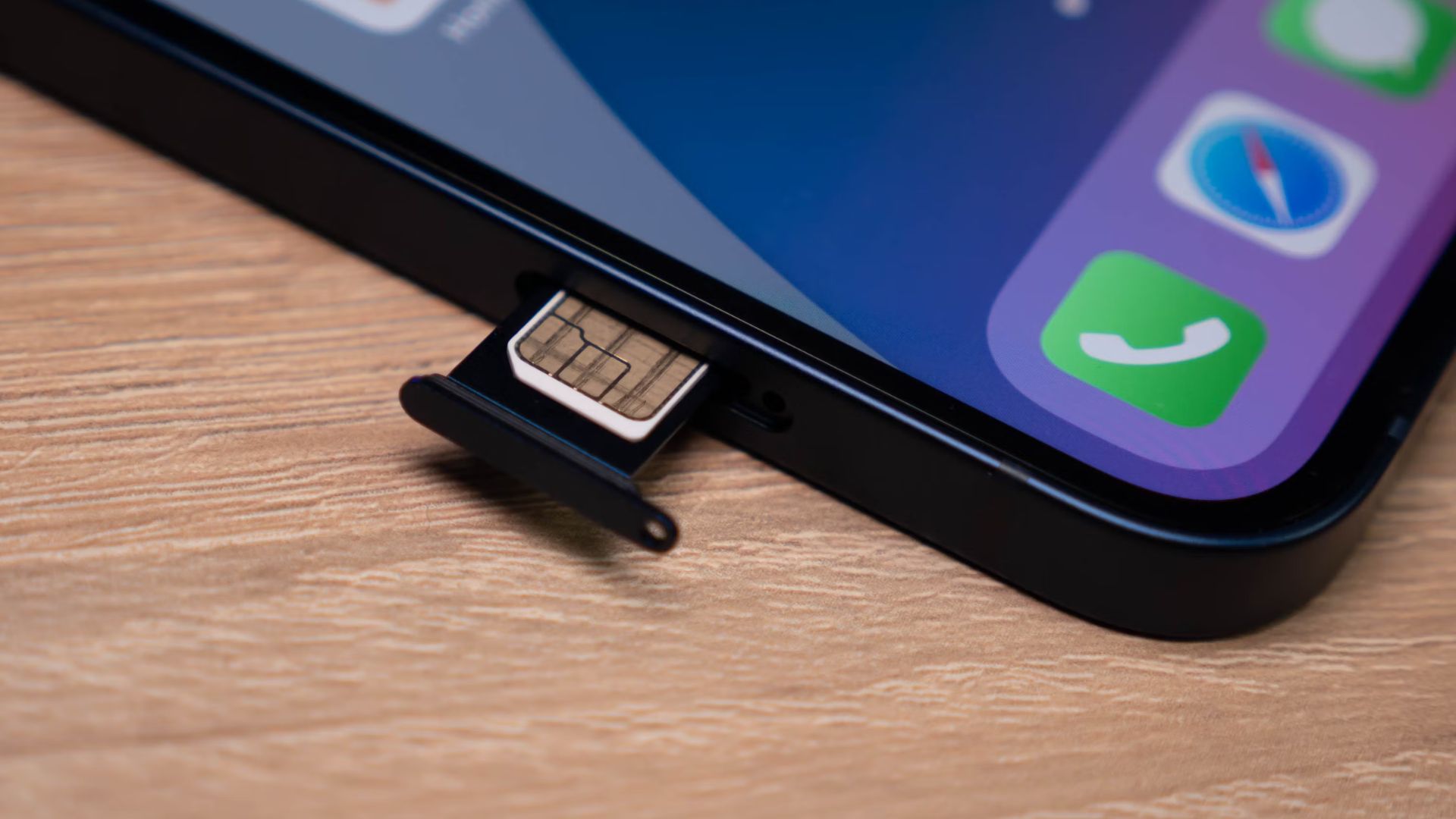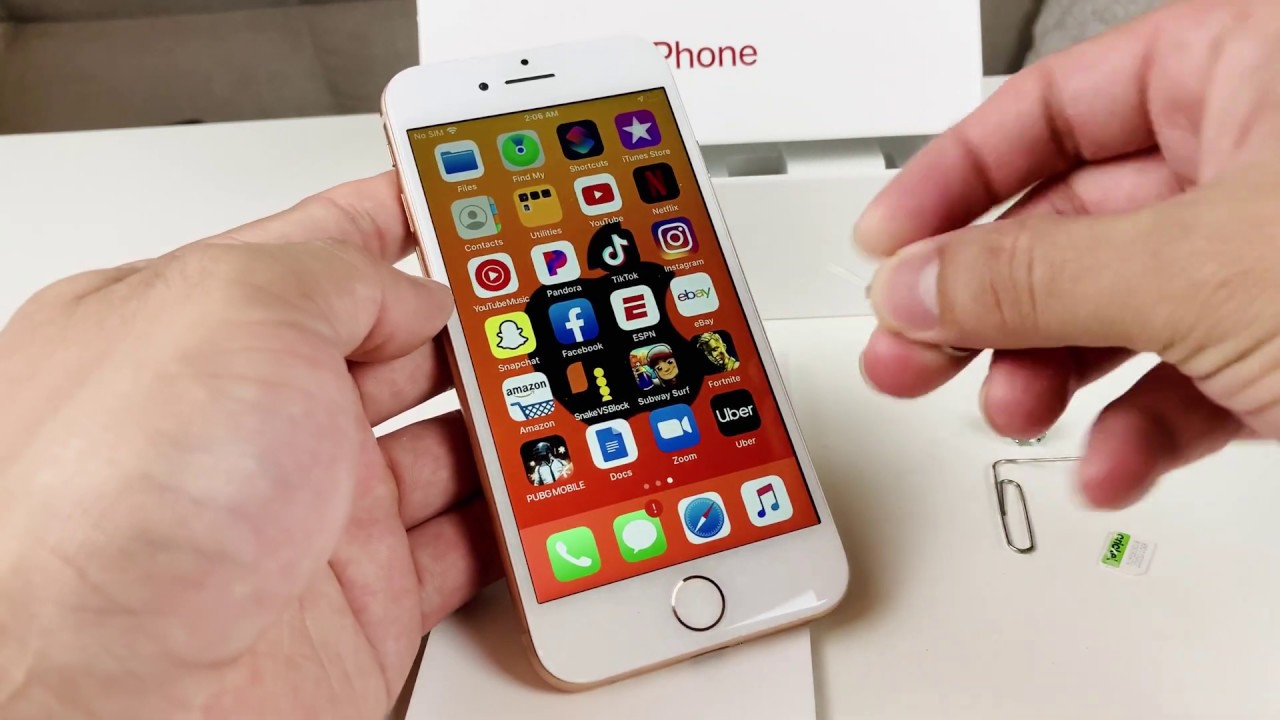Introduction
SIM cards, or Subscriber Identity Module cards, are integral components of mobile devices, serving as the key link between the user and the mobile network. These small, unassuming chips store crucial information, including the user's identity, authentication key, and contacts. While modern smartphones have shifted towards storing contacts internally or in the cloud, many users still rely on their SIM cards to safeguard their contacts. The process of extracting contacts from a SIM card has become increasingly relevant as users upgrade their devices, switch carriers, or simply seek to back up their contact information.
Understanding the significance of extracting contacts from a SIM card involves recognizing the value of the stored information. Contacts represent a network of personal and professional connections, each entry holding a unique and irreplaceable role in the user's life. Whether it's a long-lost friend's phone number, a business associate's email address, or a beloved family member's contact details, the data stored on a SIM card is a digital reflection of the user's social and professional circles.
Furthermore, the extraction of contacts from a SIM card is not only a matter of preserving personal connections, but also a practical consideration in the context of device upgrades and network changes. When transitioning to a new phone or switching to a different mobile network, having access to one's contacts can streamline the setup process and ensure continuity in communication. In essence, the ability to extract contacts from a SIM card offers a sense of security and convenience, empowering users to maintain their digital address book regardless of external changes.
As the digital landscape continues to evolve, the methods for extracting contacts from SIM cards have also diversified. From traditional SIM card readers to mobile phone settings and third-party software solutions, users have a range of options to choose from based on their preferences and technical proficiency. Each method presents its own set of advantages and considerations, underscoring the importance of understanding the available approaches for extracting contacts from a SIM card.
In the subsequent sections, we will delve into the intricacies of SIM cards, explore the significance of extracting contacts from these tiny yet influential chips, and navigate the various methods available for this essential task. By gaining a comprehensive understanding of these aspects, users can effectively manage their contact information and adapt to the dynamic nature of mobile technology.
Understanding SIM Cards
A SIM card, short for Subscriber Identity Module card, is a fundamental component of mobile devices, playing a pivotal role in facilitating communication and data connectivity. These small, thumbnail-sized chips are typically located beneath the battery or in a designated slot on the side of the device. Despite their diminutive size, SIM cards wield significant influence by storing essential information that enables users to access mobile networks and communicate with others.
At its core, a SIM card serves as the user's unique identifier within the mobile network ecosystem. It contains crucial data, including the International Mobile Subscriber Identity (IMSI), which is a unique number used to identify a subscriber within the network. Additionally, the SIM card houses the Integrated Circuit Card Identifier (ICCID), a distinct serial number that distinguishes the SIM card itself. These identifiers are instrumental in authenticating the user's identity and enabling access to mobile services.
Moreover, SIM cards store contact information, such as phone numbers and associated names, providing users with a portable address book that transcends individual devices. This feature has been particularly valuable in the past when users frequently switched phones, as it allowed them to retain their contacts by simply transferring the SIM card to the new device.
In terms of security, SIM cards play a crucial role in safeguarding the user's identity and preventing unauthorized access to mobile services. The use of a Personal Identification Number (PIN) and, in some cases, a Personal Unblocking Code (PUK) adds an additional layer of protection to the SIM card, ensuring that only authorized users can access its contents and utilize mobile services.
From a technical standpoint, SIM cards come in various form factors, including the standard SIM, micro-SIM, and nano-SIM, each tailored to fit different device models. This adaptability allows SIM cards to remain compatible with a wide range of mobile devices, ensuring seamless integration and functionality across diverse hardware configurations.
Understanding the multifaceted nature of SIM cards is essential for users seeking to maximize the potential of their mobile devices. By grasping the significance of these small yet powerful components, individuals can appreciate the role of SIM cards in enabling seamless communication, preserving contact information, and upholding the security of mobile services. This foundational understanding sets the stage for exploring the methods of extracting contacts from SIM cards, a process that holds practical relevance in the context of modern mobile technology.
Importance of Extracting Contacts from SIM Card
The importance of extracting contacts from a SIM card cannot be overstated, as it directly relates to the preservation of vital personal and professional connections. Contacts stored on a SIM card represent a digital repository of relationships, encompassing friends, family members, colleagues, and acquaintances. Each entry in the contact list holds intrinsic value, serving as a direct link to individuals who play diverse roles in the user's life.
In the event of a device upgrade or a transition to a new mobile network, the ability to extract contacts from a SIM card becomes indispensable. It ensures that the user's network of connections remains intact, transcending the limitations of specific devices or carriers. This continuity in contact information empowers users to seamlessly transition to new devices without the risk of losing touch with important individuals.
Moreover, extracting contacts from a SIM card serves as a proactive measure to safeguard against unforeseen circumstances such as device loss, damage, or malfunction. By preserving contact information externally, users mitigate the potential impact of unexpected events on their ability to communicate and stay connected with their network.
Furthermore, the extraction of contacts from a SIM card aligns with the broader ethos of data backup and security. In an era where digital information is increasingly vulnerable to loss or corruption, maintaining a backup of essential contacts on a separate platform provides an added layer of resilience against data-related setbacks.
From a practical standpoint, the process of extracting contacts from a SIM card streamlines the setup and configuration of new devices. It eliminates the need for manual entry of contact information, saving time and effort while ensuring that the user's address book remains readily accessible on the new device.
In essence, the importance of extracting contacts from a SIM card extends beyond the realm of convenience; it embodies a proactive approach to preserving valuable connections, fortifying data security, and facilitating seamless transitions within the dynamic landscape of mobile technology. By recognizing the significance of this task, users can proactively safeguard their social and professional networks while embracing the fluidity of modern mobile devices and networks.
Methods for Extracting Contacts from SIM Card
Extracting contacts from a SIM card can be accomplished through various methods, each offering distinct advantages and considerations. These methods cater to different user preferences, technical proficiencies, and available resources, ensuring that individuals have multiple avenues to retrieve their contact information from their SIM cards.
Using a SIM Card Reader
One of the traditional methods for extracting contacts from a SIM card involves using a SIM card reader. This compact device, often resembling a USB flash drive, allows users to insert their SIM card and connect the reader to a computer or mobile device. Once connected, specialized software can be used to access the contacts stored on the SIM card and transfer them to the desired location, such as a computer or another storage medium. SIM card readers offer a straightforward and reliable means of extracting contacts, making them suitable for users who prefer a direct and tangible approach to managing their data.
Using a Mobile Phone
Many modern mobile phones provide built-in functionality to extract contacts from a SIM card. By accessing the phone's settings or contacts management interface, users can initiate the process of importing SIM card contacts to the phone's internal storage. This method is particularly convenient for individuals who prefer to streamline the extraction process by leveraging the capabilities of their existing mobile devices. It eliminates the need for additional hardware or software, offering a seamless and integrated approach to transferring contact information.
Using Third-Party Software
For users seeking advanced features and customization options, third-party software solutions offer a comprehensive approach to extracting contacts from a SIM card. These software applications, available for both computers and mobile devices, provide enhanced control over the extraction process, allowing users to manage and organize their contact data efficiently. Additionally, some third-party software may offer additional functionalities, such as data backup, contact synchronization, and cross-platform compatibility, further enhancing the overall utility of the extraction process.
Each method for extracting contacts from a SIM card presents unique advantages, catering to diverse user preferences and technical requirements. By understanding the available methods and their respective attributes, individuals can make informed decisions regarding the most suitable approach for extracting their contact information from their SIM cards.
Using a SIM Card Reader
Using a SIM card reader provides a traditional yet effective method for extracting contacts from a SIM card. This compact and portable device serves as a bridge between the SIM card and a computer or mobile device, enabling users to access and transfer their contact information with ease.
The process begins by inserting the SIM card into the designated slot on the SIM card reader. Once the SIM card is securely in place, the reader can be connected to a computer or mobile device via a USB port. This establishes a direct link between the SIM card and the host device, allowing the user to access the stored contacts using specialized software designed for SIM card management.
The software associated with the SIM card reader typically offers a user-friendly interface, guiding individuals through the process of extracting contacts from the SIM card. Users can view and select specific contacts or opt to transfer the entire contact list to the desired location, such as a computer's hard drive or an external storage device. This flexibility empowers users to customize the extraction process based on their specific requirements, whether it involves backing up all contacts or selectively transferring certain entries.
Furthermore, SIM card readers are compatible with a wide range of devices and operating systems, making them a versatile solution for users with diverse hardware configurations. Whether it's a Windows, Mac, or Linux system, SIM card readers can seamlessly integrate with various platforms, ensuring accessibility and functionality across different environments.
The convenience and reliability offered by SIM card readers make them a preferred choice for individuals who value a tangible and direct approach to managing their contact data. Additionally, the portability of SIM card readers enables users to extract contacts from their SIM cards on the go, without being tied to a specific device or location.
In essence, using a SIM card reader provides a straightforward and efficient method for extracting contacts from a SIM card, catering to users who seek a reliable and tangible solution for managing their contact information. By leveraging the capabilities of a SIM card reader and its associated software, individuals can seamlessly transfer their valuable contacts to a secure location, ensuring continuity and accessibility across different devices and platforms.
Using a Mobile Phone
Using a mobile phone to extract contacts from a SIM card offers a convenient and integrated approach to managing contact information. Many modern smartphones are equipped with built-in functionality that allows users to effortlessly transfer contacts from their SIM cards to the phone's internal storage. This method eliminates the need for additional hardware or software, streamlining the extraction process and providing a seamless transition for users.
To initiate the extraction process, users can navigate to the settings or contacts management interface on their mobile phones. Within these settings, there is typically an option to import contacts from the SIM card. Upon selecting this option, the phone automatically retrieves the contact information stored on the SIM card and imports it into the phone's address book or contacts app.
The simplicity and accessibility of using a mobile phone for contact extraction make it an attractive option for individuals who prioritize convenience and ease of use. By leveraging the phone's native capabilities, users can quickly and efficiently transfer their contacts without relying on external devices or complex procedures.
Furthermore, the integration of this feature within the mobile phone's operating system ensures compatibility and consistency across different device models and manufacturers. Whether it's an Android, iOS, or other smartphone platform, users can rely on the standardized process of extracting contacts from a SIM card, regardless of their specific device.
In addition to the seamless extraction process, using a mobile phone for contact transfer aligns with the modern user's preference for leveraging the capabilities of their existing devices. It eliminates the need for additional investments in specialized hardware or software, maximizing the utility of the smartphone as a comprehensive tool for managing personal and professional data.
Overall, using a mobile phone to extract contacts from a SIM card exemplifies a user-centric and integrated approach to contact management. By capitalizing on the inherent functionality of modern smartphones, users can effortlessly transfer their valuable contacts, ensuring continuity and accessibility within the familiar interface of their mobile devices.
Using Third-Party Software
Utilizing third-party software presents a versatile and feature-rich approach to extracting contacts from a SIM card. These software solutions, available for both computers and mobile devices, offer advanced functionalities and customization options, empowering users to manage their contact data with precision and efficiency.
Third-party software typically provides a comprehensive interface for accessing and transferring contacts from a SIM card. Upon connecting the SIM card to the computer or mobile device and launching the software, users can gain access to a range of tools and features designed to streamline the extraction process. These may include options to selectively transfer specific contacts, organize contact information into distinct categories, and perform advanced data management tasks.
One of the key advantages of using third-party software lies in its ability to offer additional functionalities beyond basic contact extraction. Some software solutions may incorporate features such as contact synchronization with cloud services, enabling users to seamlessly integrate their SIM card contacts with online platforms for enhanced accessibility and backup. This synchronization capability ensures that contact information remains updated across multiple devices and platforms, reflecting the dynamic nature of modern communication needs.
Furthermore, third-party software often provides cross-platform compatibility, catering to users with diverse hardware and operating system preferences. Whether it's a Windows, Mac, iOS, or Android environment, these software solutions are designed to function seamlessly across different platforms, ensuring accessibility and consistency in contact management.
In addition to contact extraction and synchronization, third-party software may offer robust backup capabilities, allowing users to create secure copies of their contact data for added resilience. This proactive approach to data backup aligns with the broader ethos of data security and continuity, providing users with peace of mind regarding the preservation of their valuable contacts.
Overall, the use of third-party software for extracting contacts from a SIM card represents a sophisticated and customizable approach to contact management. By leveraging the advanced features and cross-platform compatibility offered by these software solutions, users can effectively organize, transfer, and safeguard their contact information, adapting to the evolving demands of modern communication and data management.
Precautions and Considerations
When extracting contacts from a SIM card, users should exercise caution and consider several important factors to ensure a smooth and secure process. These precautions and considerations are essential for safeguarding the integrity of the contact data and minimizing the risk of potential complications.
Backup Prior to Extraction
Before initiating the extraction process, it is advisable to create a backup of the existing contact data stored on the SIM card. This precautionary step serves as a safety net in the event of any unforeseen issues during the extraction process. By backing up the contact information, users can mitigate the risk of data loss and maintain a secure copy of their valuable contacts.
Compatibility and Data Formats
Users should verify the compatibility of the extraction method or software with the specific type of SIM card they are using. Different SIM card formats, such as standard SIM, micro-SIM, and nano-SIM, may require tailored extraction approaches to ensure seamless data retrieval. Additionally, understanding the supported data formats for contact extraction is crucial, as it ensures that the transferred contacts remain accessible and usable across different devices and platforms.
Data Security and Privacy
Maintaining data security and privacy during the extraction process is paramount. Users should prioritize utilizing trusted and reputable software solutions or devices to safeguard their contact information. It is advisable to avoid unauthorized third-party applications or unverified extraction methods that may compromise the confidentiality of the extracted data.
SIM Card Handling
Careful handling of the SIM card is essential to prevent physical damage or accidental data loss. Users should ensure that the SIM card is inserted and removed from devices or readers with caution, avoiding undue force or mishandling that could potentially damage the delicate components of the SIM card.
Regulatory Compliance
Users should adhere to relevant regulatory guidelines and legal requirements when extracting contacts from a SIM card. Depending on the jurisdiction, there may be specific regulations governing the handling and transfer of personal data, including contact information. Ensuring compliance with applicable laws and regulations is imperative to uphold the ethical and legal aspects of contact extraction.
Verification of Extraction Results
After completing the extraction process, users should verify the integrity and completeness of the transferred contact data. This involves cross-referencing the extracted contacts with the original data on the SIM card to confirm that all entries have been accurately transferred. Additionally, users should ensure that the extracted contacts are accessible and functional on the intended destination, such as a new device or storage platform.
By attentively considering these precautions and considerations, users can navigate the process of extracting contacts from a SIM card with confidence and diligence, ensuring the preservation and security of their valuable contact information.
Conclusion
In conclusion, the process of extracting contacts from a SIM card is not merely a technical task; it embodies the preservation of personal and professional connections, the proactive safeguarding of valuable data, and the seamless adaptation to the dynamic landscape of mobile technology. As users navigate device upgrades, network transitions, and unforeseen circumstances, the ability to extract contacts from a SIM card serves as a cornerstone of continuity and accessibility within the realm of communication and data management.
The methods available for extracting contacts from SIM cards, including the use of SIM card readers, mobile phones, and third-party software, offer diverse avenues for users to manage their contact information based on their preferences and technical requirements. Whether it's the tangible reliability of a SIM card reader, the integrated convenience of a mobile phone, or the advanced features of third-party software, individuals have the flexibility to choose the most suitable approach for their contact extraction needs.
Moreover, the significance of extracting contacts from a SIM card extends beyond the realm of convenience; it embodies a proactive approach to preserving valuable connections, fortifying data security, and facilitating seamless transitions within the dynamic landscape of mobile technology. By recognizing the significance of this task, users can proactively safeguard their social and professional networks while embracing the fluidity of modern mobile devices and networks.
As users embark on the journey of extracting contacts from their SIM cards, they are encouraged to exercise caution, prioritize data security and privacy, and adhere to relevant regulatory guidelines. By considering these precautions and considerations, individuals can navigate the extraction process with diligence and confidence, ensuring the preservation and security of their valuable contact information.
In essence, the extraction of contacts from SIM cards reflects the enduring importance of personal connections in the digital age and underscores the proactive measures individuals can take to uphold the accessibility, security, and continuity of their contact data. By embracing the available methods and best practices for contact extraction, users can navigate the evolving landscape of mobile technology with resilience and confidence, ensuring that their valuable connections remain within reach, regardless of technological transitions or unforeseen events.







